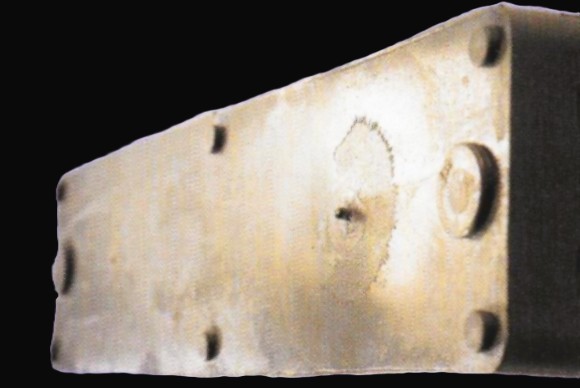
Injection Molding – Tool Deposit
One of the more elusive issues that can manifest itself in injection molding is the occurrence of tool deposit.
Tool deposit is, exactly as the word says, is the formation of a deposit on any part of the tool during operation. The issue can occur in different forms and on different parts of the tool. The physical shape of the deposit can range from a hard, hard to remove substance to a nearly liquid form. It can occur in different locations on the tool ranging from the cavity surface to the vents located at the edge.

Deposits in the tool can cause a variety of defects such as loss of definition in a structure surface, marks on the molded parts and the occurrence of burn marks or visible weld lines caused by blocked vents. Some deposits can be very hard to remove from the tool surface.
The root cause of tool deposit is the transfer of certain components from the plastic melt that condenses and possible solidifies on the surface of the tool. The fact that tool deposit itself occurs in different forms is indicative of the different origins the deposit itself can have.
A number of plastics are actually formulated containing a component that is to be transferred from the plastic melt to the tool surface; the release agent. A release agent is present to facilitate the removal of the part from the tool cavity. Ideally there is a balance between the amount of release agent deposited on the tool surface and the amount removed with every plastic part produced. Excess release agent on the tool surface may be indicative of a too high concentration of release agent in the material or the wrong type.
Other additives, such as certain stabilizers and UV stabilizers are known to be prone to cause tool deposit. The presence of high content of low molecular weight polymer material in the product may also be a reason. These matters are usually the responsibility of the material producer.
As a processor there are things you can do to avoid the danger of tool deposit. Materials tend to higher amount of volatile components at higher temperature so if possible avoid to be at the high end of the recommended temperature range and certainly not above.
Secondly, make sure that material that needs to be dried prior to processing actually conforms with the recommendation. Moisture can cause degradation of the resin and can act as a vehicle for other components to migrate faster.
Use mild processing conditions; high back pressure may cause unwanted friction and degradation.
Injection speed can be a determing factor. Too low speed and long injection times allow for more gassing out of the polymer melt. Insufficient venting caused by improper design of fouling may prevent you to inject at the optimal speed and result in volitile components condensating on the surface of the tool.
Key in resolving deposit issues is determining the root cause of the issue. Analysis of the molding conditions, equipment and tool will give you some basic information as to the “health” of the process. Sometimes however, the root cause is in the composition of the material and the solution is outside of most the processors capabilities.
Determining the composition and the origin of the deposit is however an expertise that most processors do not have in-house themselves. It requires the availability of specialised analytical techniques and indepth knowledge of the materials used.
For that processors have to rely in most cases on the material supplier; when this option is not available or hasn’t resulted in a satisfactory result, an independent specialist may provide specialist support.
An independent specialist may provide you with an expert opinion on the issue, support you in resolving the issue and may provide you with access to a network of specialized laboratories.
PS: No AI was used in writing this blog.